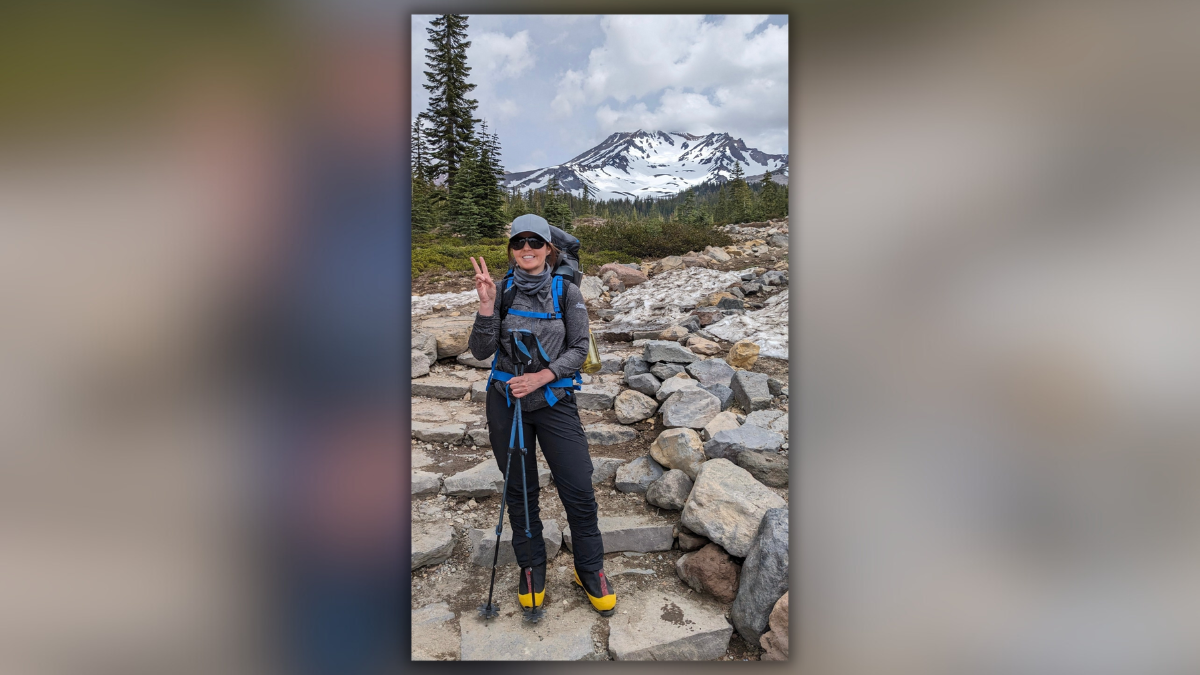
Elizabeth Kostal has already done plenty of big things.
She’s a doctor. She has a pilot’s license with an instrument rating, so she can fly at night with no landmarks to see by.
Now, she's working on one of the biggest adventures in the world: Climbing Mt. Everest.
“I've always been fascinated with Everest, right from a very young age. And it's the ultimate challenge, physiological and mental,” she said.
Kostal plans to start her Everest ascent in 2026. It’s an intensive training process and can be a dangerous trip. Hers is even more so: She has a heart pacemaker and other Everest climbers with the same device haven’t always been able to safely reach the summit because of it.
Kostal is working her way up to Everest by climbing smaller mountains and doing altitude training in her home. Her equipment — a tent and a mask — simulates altitude by removing the right amount of oxygen from the air.
In June 2023, Kostal climbed Mt. Shasta in California to test the settings on her pacemaker, mostly whether she would need to speed it up or slow it down to keep up with how hard she’s exerting herself..
She said it worked “spectacularly.”
Kostal is working with Boston Scientific, the manufacturer of her pacemaker. It’s paying for a portion of her trip, and will use the data she collects during her climb.
The average cost of an Everest summit attempt is between $40,000 and $60,000.

Chesapeake doctor Elizabeth Kostal is training to climb Mt. Everest with a pacemaker.
Kostal got her pacemaker when she was 24, years after a car crash destroyed her superior vena cava, a large vein in the upper part of the heart.
She and her friend wrecked on a washed-out road in a Suzuki Sidekick.
Kostal was thrown clear of the car. Her friend, Kristy, was killed.
She thinks of Kristy as motivation for her life accomplishments.
“I have a family, I have children, I've gone to college, I've bought a house … I've been climbing in Ecuador. I have a pilot's license. I have these things,” Kostal said.
“And she didn't graduate high school…she didn't even get a taste of life. … I can't squander that.”
Kostal said she isn’t ignorant of the risks of climbing Everest with a pacemaker.
“Pulmonary edema happens to the best and the fittest with no pacemaker,” she said, naming one of the most common causes of disorientation and death on the mountain.
In May, an Indian woman attempting to summit with a pacemaker ignored her Sherpa guides’ advice to abandon her climb and had to be airlifted out. She died shortly afterward.
Kostal has fielded criticism from family and friends about the danger of her climb, especially she since has two daughters.
“I'm not planning to summit at all costs,” she said. “If a Sherpa or a guide said, ‘You need to turn around, this isn't safe,’ there is nothing that would make me say, ‘No, I'm going forward. I'm going to keep going.”
“I would turn around and understand that I can always come back and try again. The mountain is not leaving.”
Kostal said she’s talked to her kids about the dangers of Everest, like she does before any of her mountain climbs.
“A lot of deaths on Everest are due to not turning around at an appropriate time, not taking advice, going unprepared, not having the right equipment … and of course, avalanche risk, which exists for everyone regardless if you have a pacemaker or not,” she said.
Kostal will go up the North Side of Everest instead of the more popular southern route, which can get busy and slow down that day’s summit attempts. Climbers bottleneck and wait for hours in that area, called the death zone because of its lack of oxygen, to try again.
Kostal said the effects of altitude on pacemaker function is “extremely theoretical.”
Her device uses muscle vibrations to determine whether she’s sitting, standing or moving around, and changes her heart rate based on that.
Climbing in mountain passes, Kostal has discovered her pacemaker often sets her heart rate higher than she needs — and she’s working to fix that.
Before her 2026 Everest climb, Kostal will go back to Shasta to work on her technical climbing skills.
That mountain is about half as tall as Everest.
This story was updated Dec. 22 to correctly identify Kostal is based in Chesapeake.





